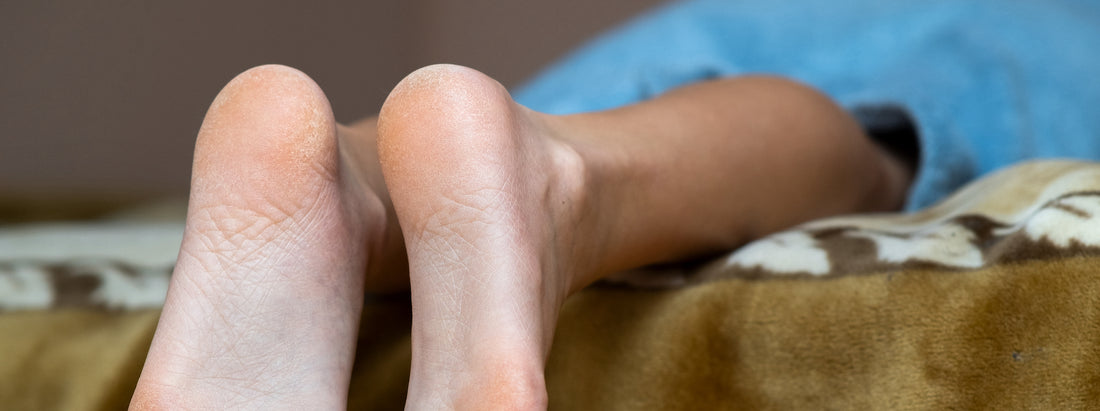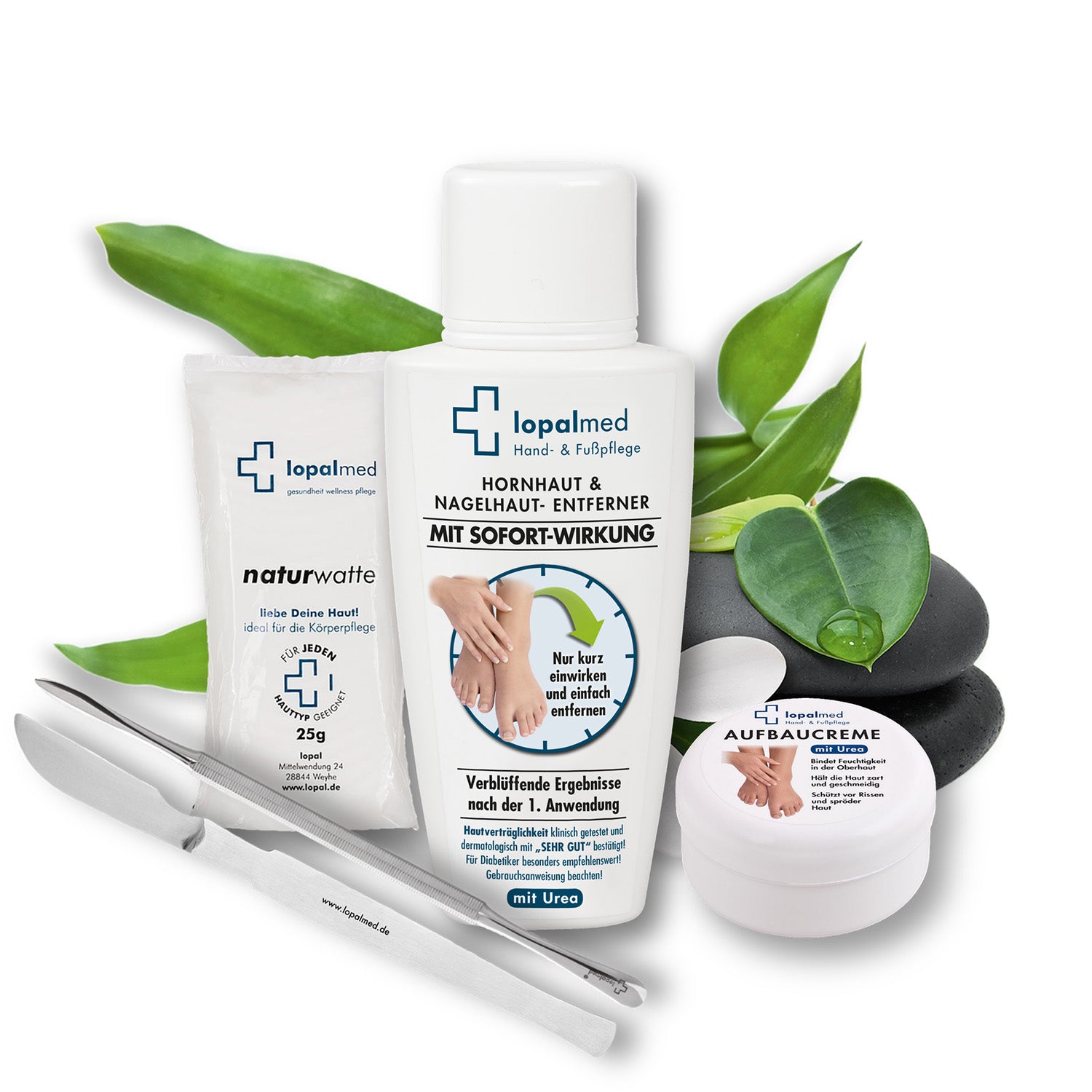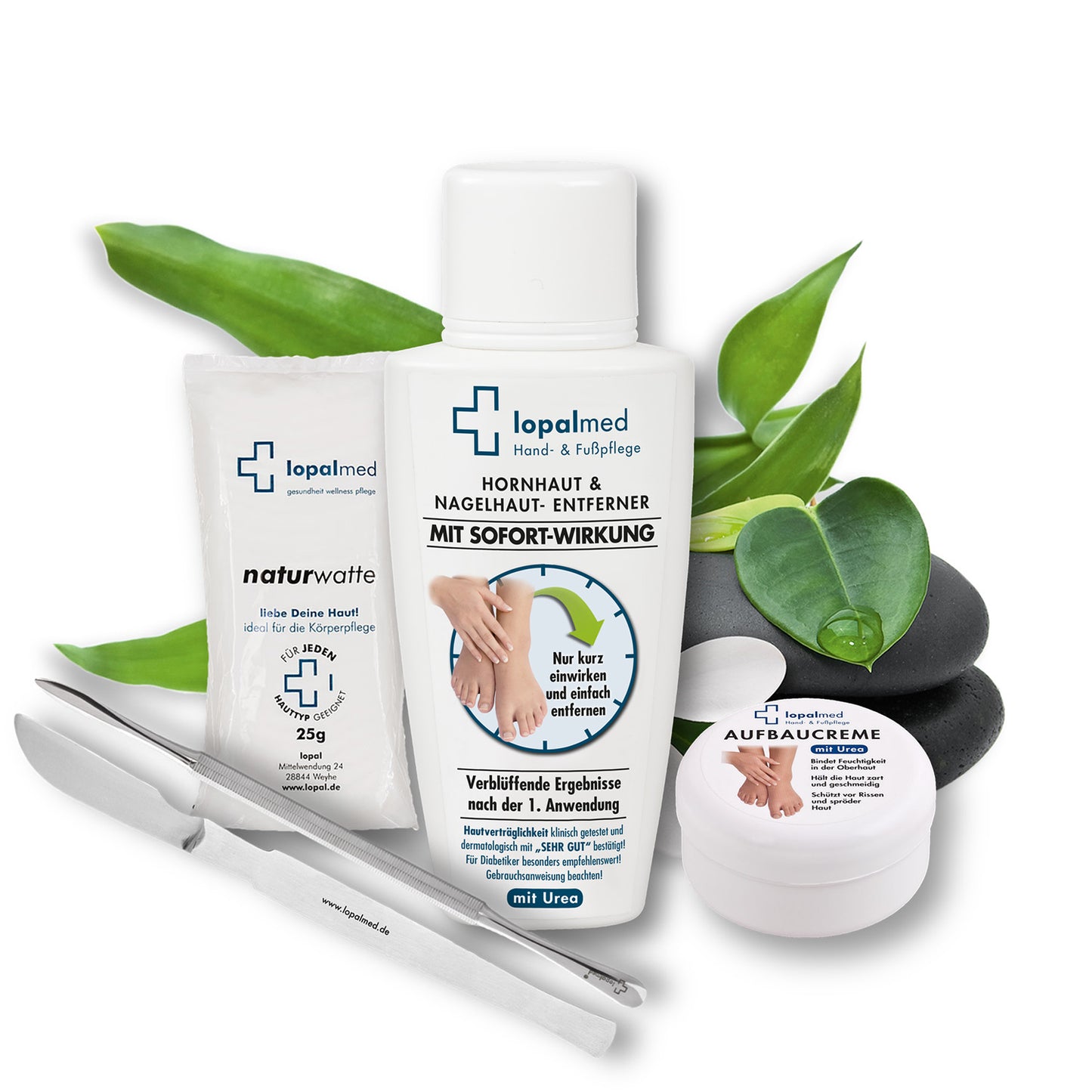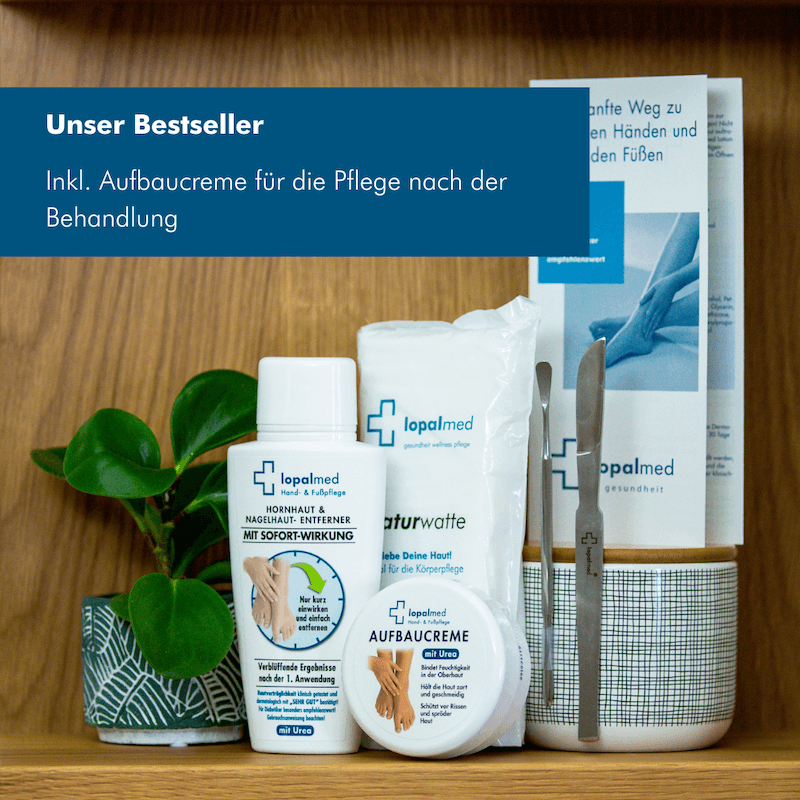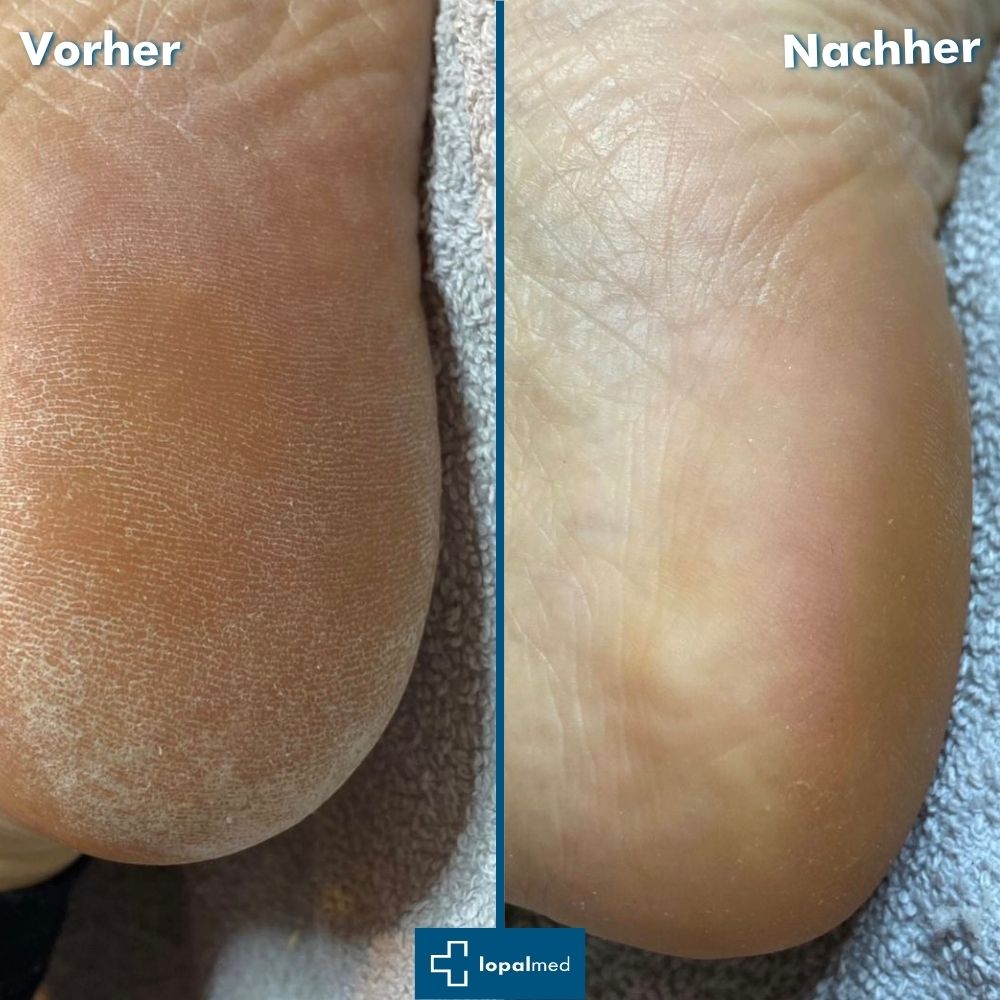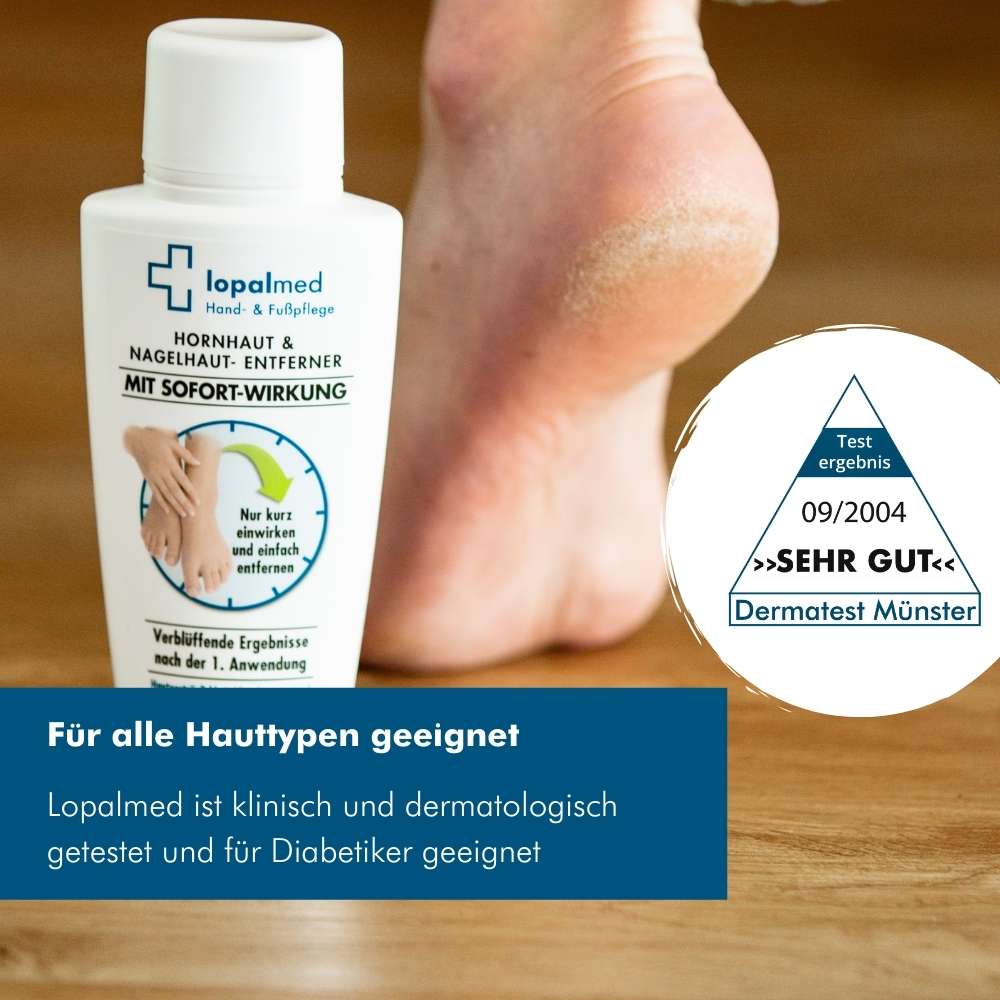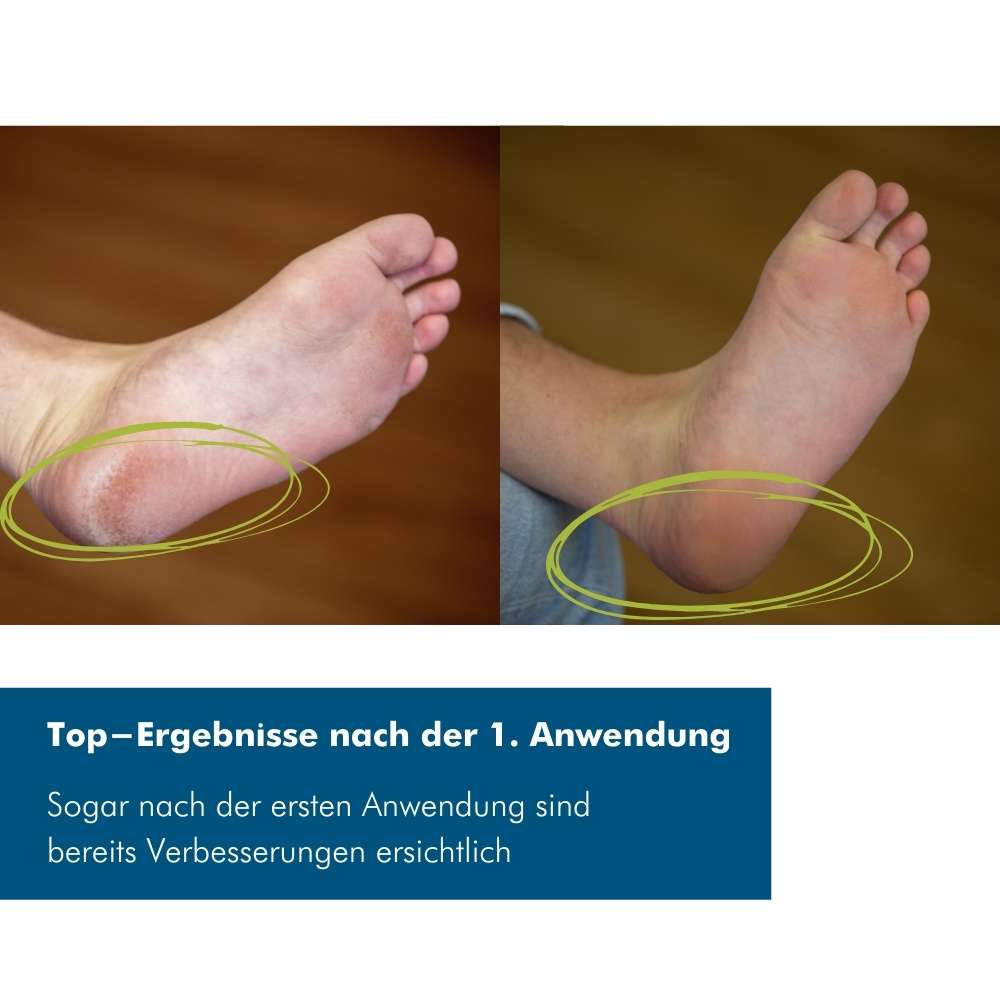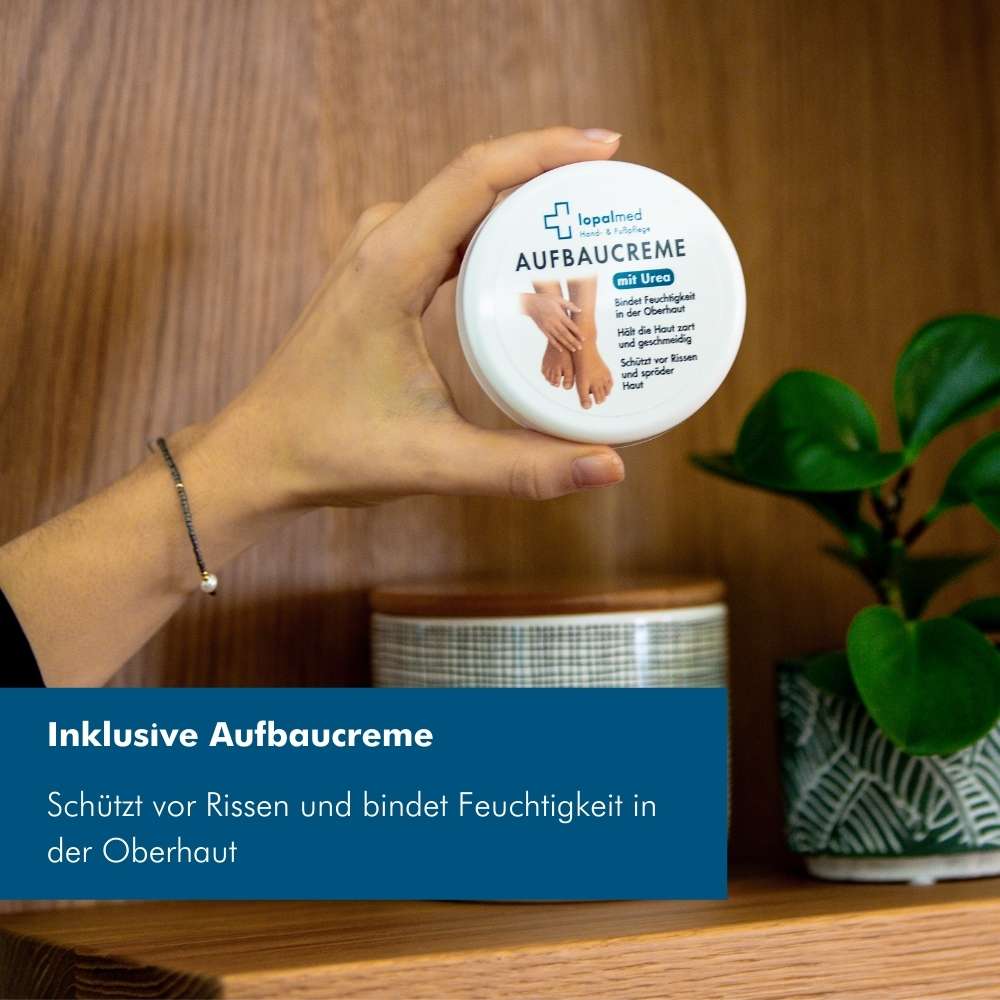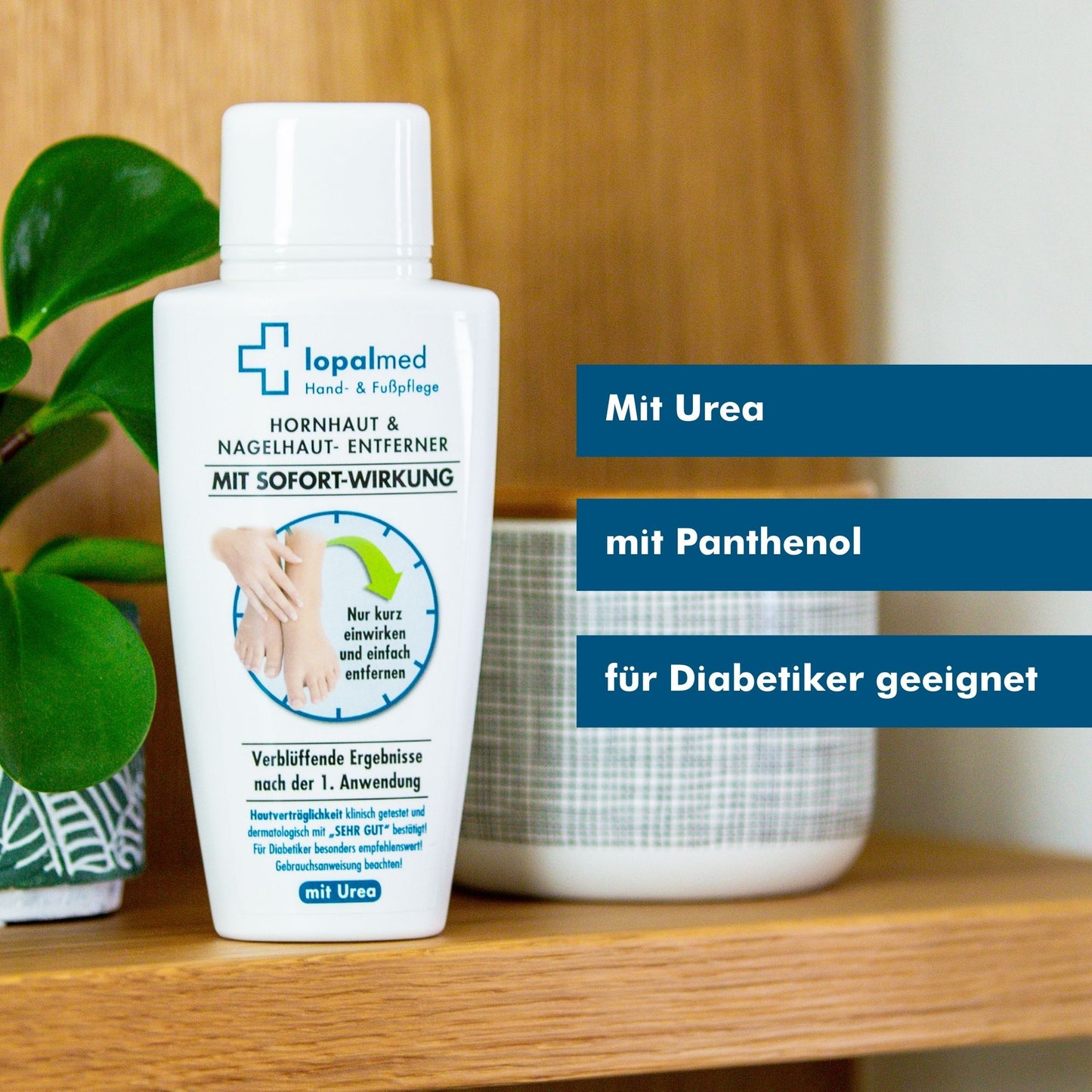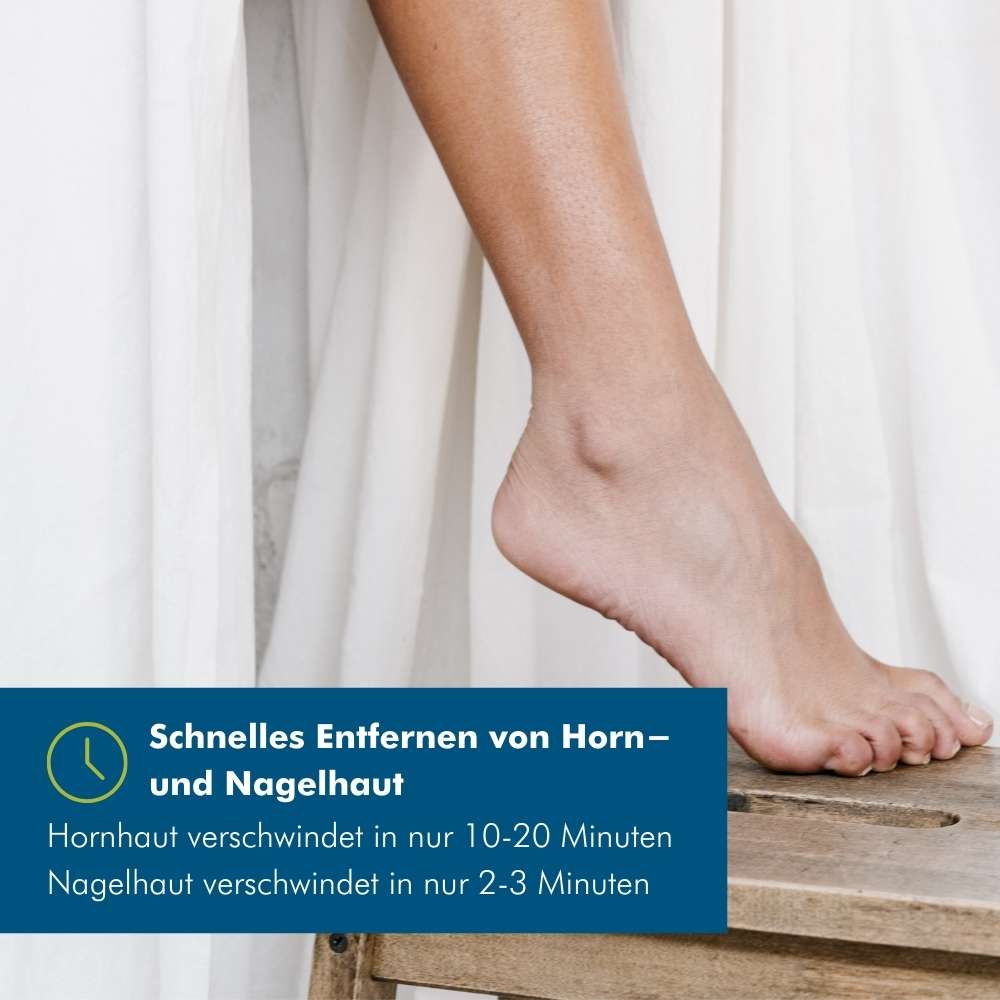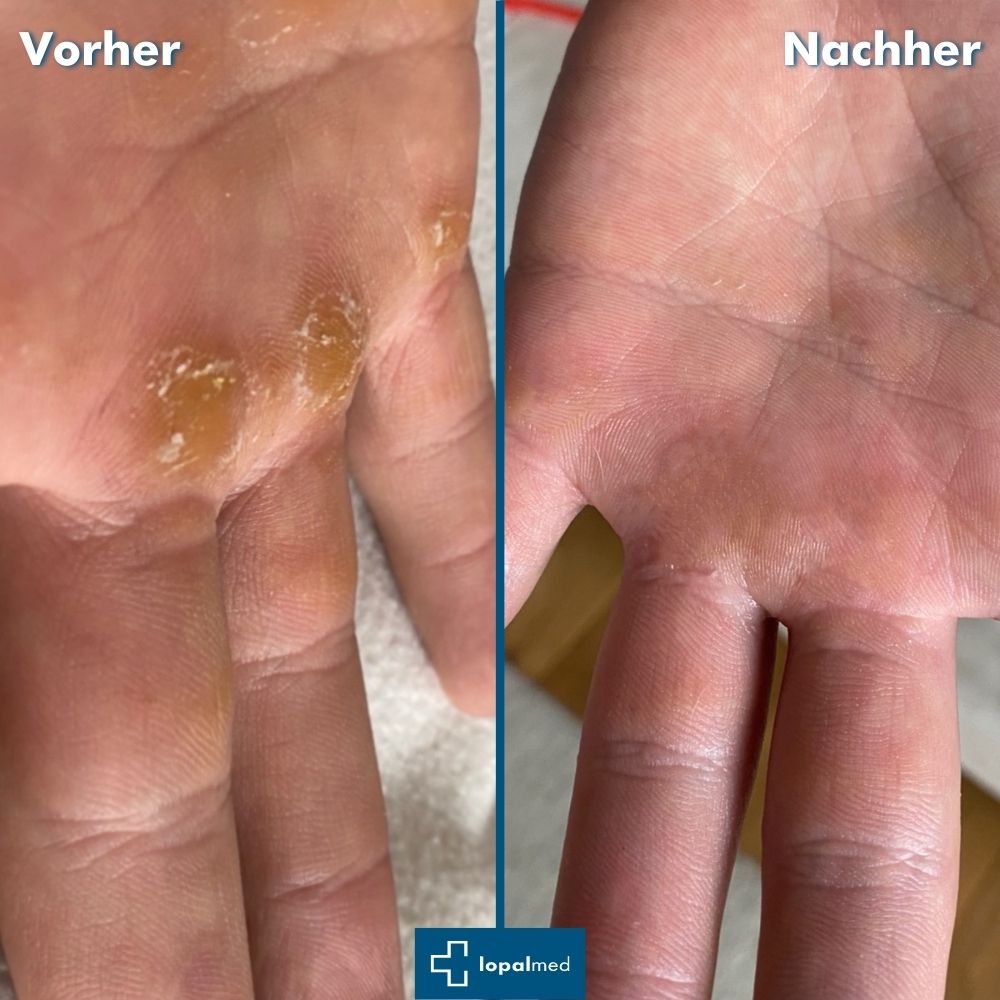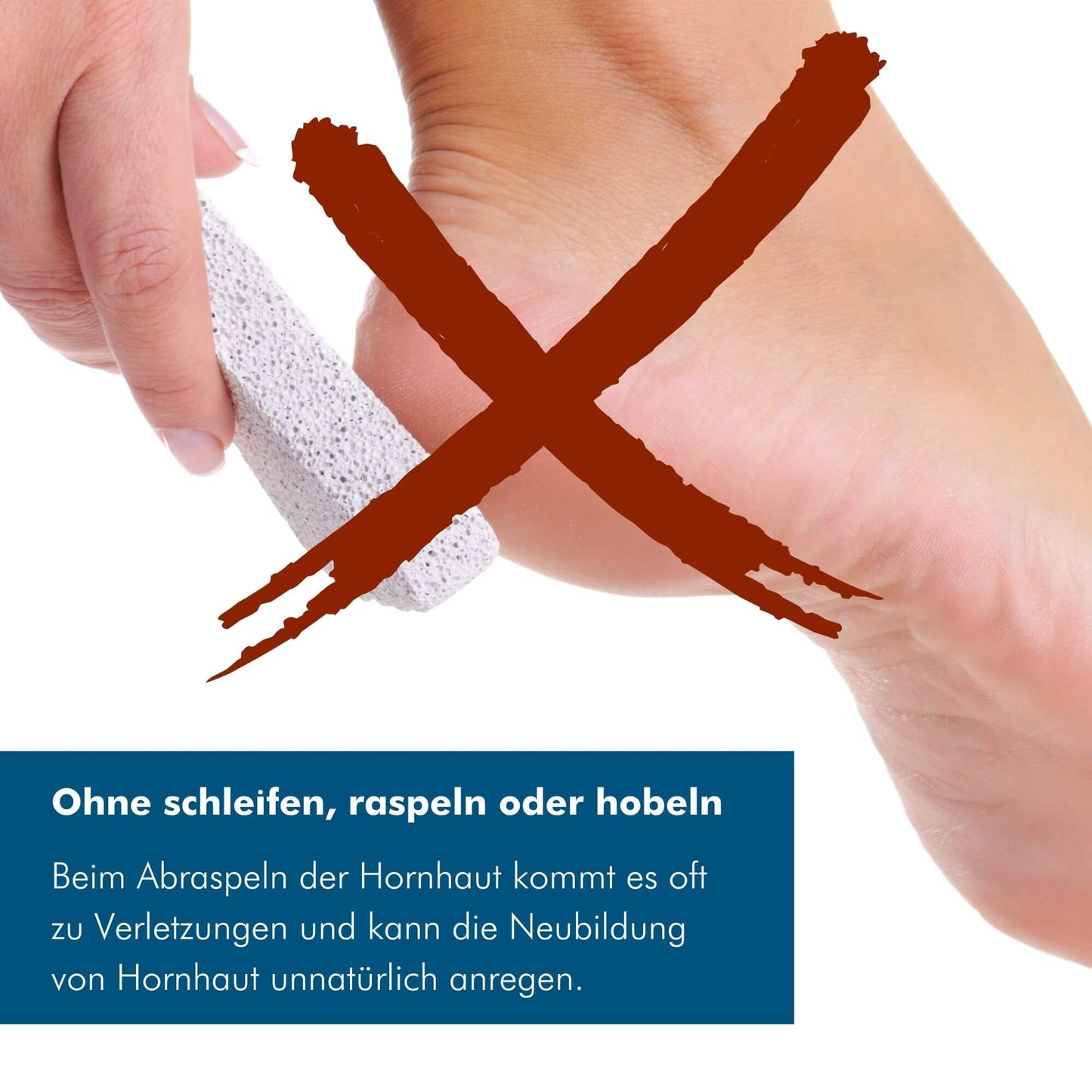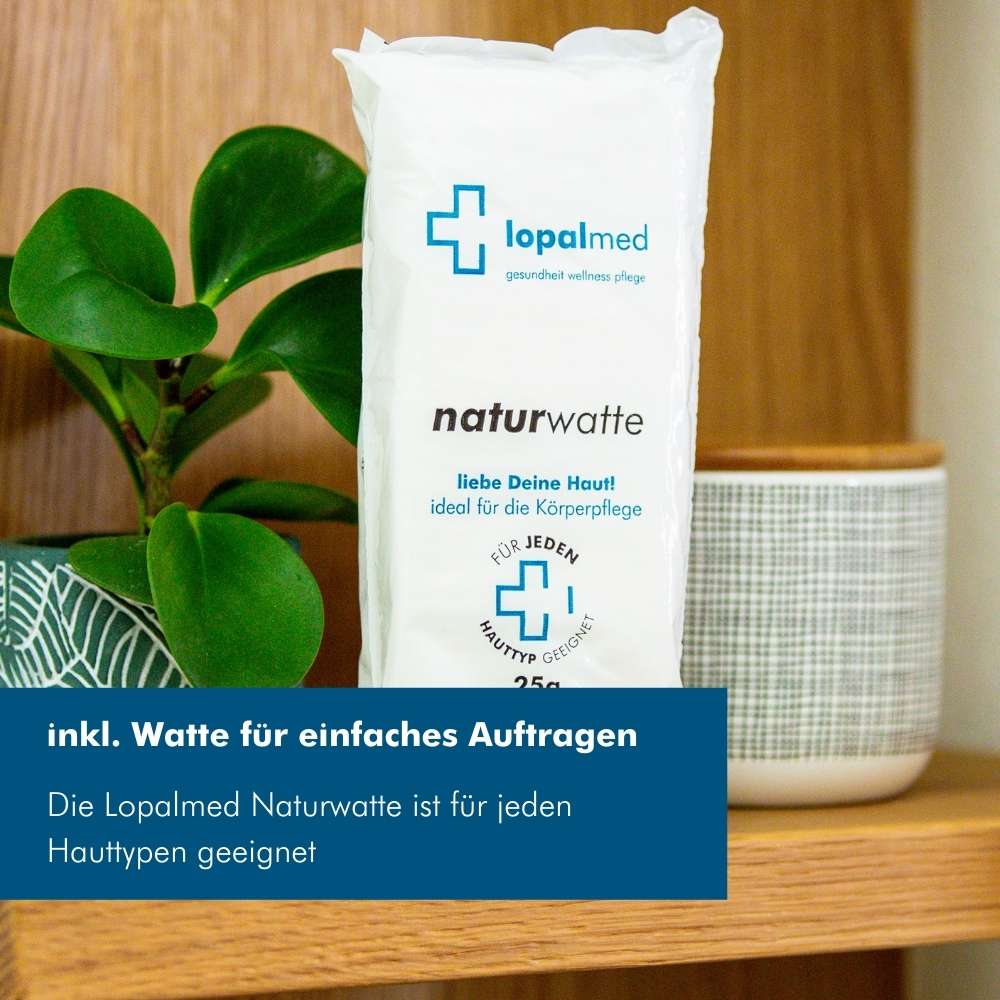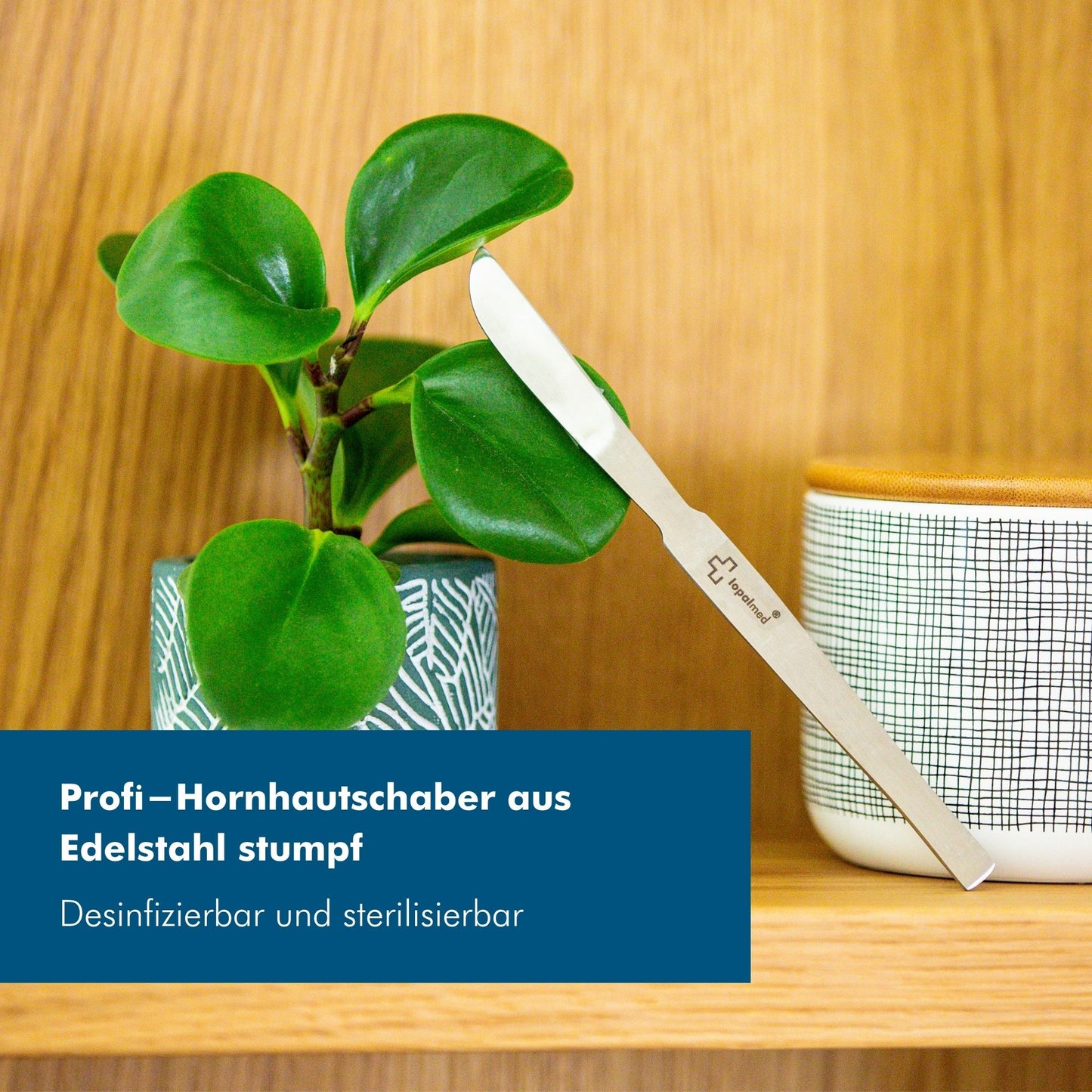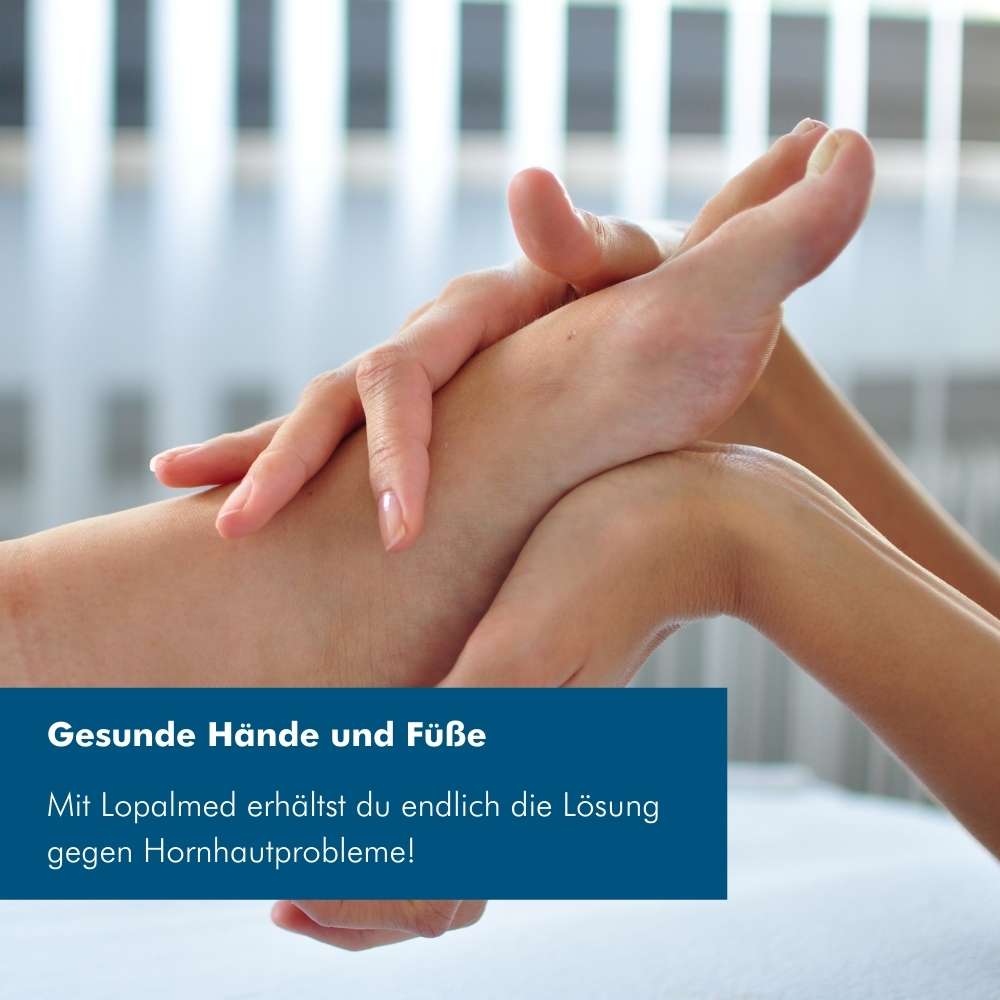The skin is the largest organ in our body. That's why you should pay special attention to it. Calluses are particularly annoying, often lead to pain and no longer allow the skin to work 100% as intended. Here we explain what calluses are and how you can get rid of them gently !
What are Calluses?
We talk about calluses when thickened or dry skin surfaces develop on the foot or on the palms of the hands. The heels and soles of the feet in particular are often affected, especially due to their frequent contact with the ground. Callus surfaces are described by their round shape and the partially crossing lines on their surface. Frequently affected areas are the top of the foot, the outer edges of the toes, the ball of the foot and especially the rear heel area (mainly due to the high pressure load caused by walking).
Callus formation is a natural protective response by our outermost layer of skin , the epidermis, to protect against pressure and friction. As a rule, calluses do not cause much pain. The hardened skin can only cause a slight burning sensation. However, if the pressure load is particularly high or long-lasting, the callus can also tear, leading to additional pain. In general, however, calluses on the foot are more of an aesthetic problem , as the yellowish hardening and calluses are not nice to look at. But regardless of whether the callus causes pain or whether it is just an aesthetic problem - it should be treated in any case . Calluses can be brought under control quickly with simple treatment options and the right prevention and care.
How is the callus formed?
Calluses form when our skin is subjected to high pressure or friction. Other factors that promote the formation of calluses are dry skin, the wrong shoes or a damaged skin barrier . Shoes that don't fit can cause rubbing, further irritating the skin. In response to this stress, the skin reacts by forming calluses, which are intended to protect the skin from further injury . The skin barrier protects the body from bacteria, viruses and moisture loss. If this is damaged, the skin can lose moisture, which under certain circumstances leads to callus formation. Since we spend most of the day on our feet and our feet carry our entire body weight all the time, they are often subjected to pressure - which is why our feet are particularly affected by calluses. With age, the symptoms of dry skin can worsen. The older the skin gets, the more difficult it is to produce fat and store moisture - which is why calluses appear more frequently in older people . There are also gender-specific differences in the symptoms – as a rule, women are more frequently affected by calluses than men . One reason for this is that various hormones, including sex hormones, can promote the formation of dry skin. Dry skin can also occur more frequently during the menopause. In addition, other foot problems, such as malpositions or injuries, can increase the formation of calluses, since the skin is additionally stressed in these areas and is therefore particularly vulnerable.
How can calluses be removed?
Gentle products such as Lopalmed callus and cuticle remover are suitable for immediate pain relief and protection of the soles of the feet. This will give you silky soft and well-groomed feet . With this product you treat without the need for abrasive surfaces (such as pumice stones, rasps or callus planes) that are often used for manual callus removal. These abrasive materials often lead to injuries or irritation of healthy skin. In response, the skin wants to protect itself from this stimulus and immediately produces new calluses. After about 4-6 weeks, the same callus that was just removed is often there again. It's exactly the same with the cuticle. Once you start clipping or pushing back cuticles, you'll do it again and again. Whoever cuts once, usually always cuts!
Another measure of treating and removing calluses is the following at-home foot care routine: Soothing Foot Soak – Before beginning the actual callus removal, soak your feet in a foot bath for about 15 minutes. This not only ensures that the calloused skin surfaces soften, but also nourishes moisture and soothes your feet.
After you have removed the callus, it is important to thoroughly care for the skin and moisturize it as a last step. To do this, apply Lopalmed's build-up cream to the treated areas. This contains special active ingredients that moisturize stressed feet and make them soft. The cream protects your skin from drying out and from the formation of cracks and calluses. Proper prevention of calluses In order to prevent calluses in the long term, it is particularly important not only to take care of your feet intensively when calluses appear, but also to take preventive measures . You can, for example, repeat the care steps described above at regular intervals. Regular pedicures are also recommended. This not only relaxes your feet, but also offers you the ideal opportunity to switch off completely for a short time and relax in peace. Apart from that, you should always wear suitable shoes to prevent calluses, so that the pressure on your feet is reduced. It also helps to apply lotion to the feet regularly and generously (e.g. with the callus reducing cream - included in the Lopalmed premium box ) and to provide them with additional moisture in this way. If you frequently suffer from calluses or particularly severe calluses on your feet, you should consult a doctor or seek medical foot care .

